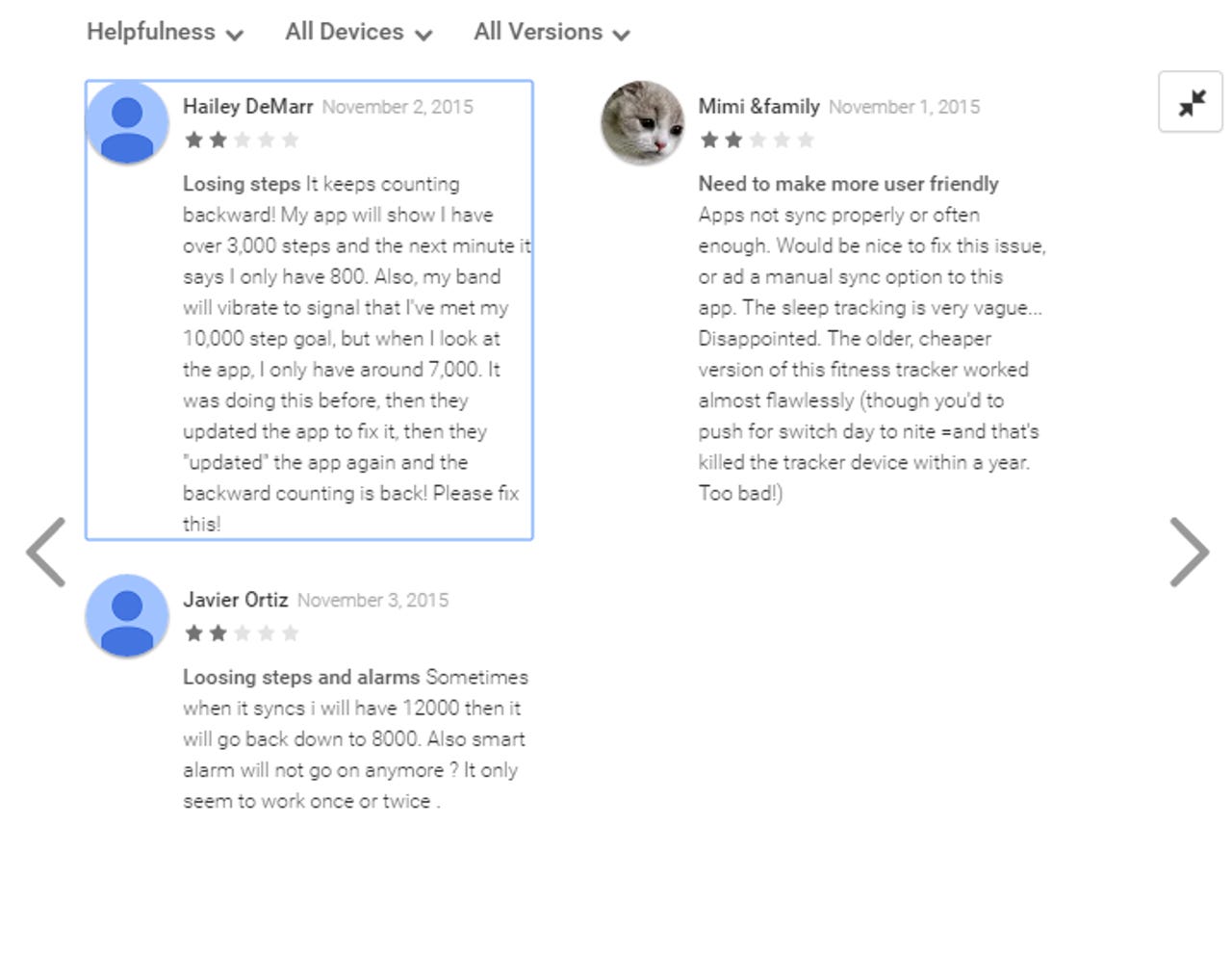How data screwups may decide the fitness tracker wars

The fitness tracker war won't be won or lost on hardware design, app graphics, the ability to track exercise and sleep or the response to a well-heeled rival like Apple or Samsung. The fitness tech game will be won on how well vendors handle your data.
Every relationship has a breaking point -- the one moment when you say enough and move on forever. Apply that axiom to the fitness tracking industry and the breaking point is when your favorite wearable loses your data.
In recent months, I've suffered data losses about a dozen times across two vendors. If you use a fitness tracker, there's nothing worse than going for a run, hitting 20,000 steps and watching the app give you credit and then refresh and lose the information. It's like the run never happened.
Related: Microsoft Band 2 review from a first-time fitness band user | Fitbit's enterprise plan: Delivering real returns on employee wellness | Wearables: Fit For Business? | CNET's Smartwatch and fitness tracker buying guide and latest reviews
Jawbone was the first one to tip the data loss scales for me. My history with Jawbone is long. I started with the Jawbone Up that had a design that was lightweight and could be worn on ankle or wrist. The hardware failed almost quarterly, but Jawbone's support and warranty kept me around. The app design and graphics really kept me in the fold even as Jawbone's design shift moved away from what I wanted.
And then came the data loss issues. Based on a scan of Google Play reviews vs. Apple App Store, these issues primarily turn up on Android . Here's how the data spiral plays out. Data is lost, you have gaps in your activity during the day and Jawbone says it can restore the information but doesn't. You call support, which is helpful, but every update causes some kind of issue. It's even difficult to deliver screen shots as proof because the data is lost in a blink of an eye.
After losing yet another run I ultimately left Jawbone behind. I went with Misfit's Shine, which has an app that's utilitarian, but the hardware flexibility I want. If you cycle, wearing a wrist tracker is brutal and it's better to put the tracker on your foot. The wrist dominated fitness industry misses that point all too often. Misfit is one of the few that allows you to wear the tracker in a handful of spots. Meanwhile, it's nice to know I can swim with the Shine. Of course, I swim like a brick (an inefficient one), but it's nice to have the option.
And then Misfit lost data three times in the past week. From my experience and perusing reviews the issue for both Jawbone and Misfit rhyme somewhat.
Here's Jawbone.

And here's Misfit.
The response from Jawbone played out on Twitter and email.
Misfit primarily manages its email queue when it comes to support, which has been solid. Misfit said it's aiming to fix the data loss issue with its next update.
It's unclear what's happening behind the scenes on the device to app to database handoff, but fitness tracking vendors need to be on top of the issue. The fitness wearable market is intense, increasingly commodity and customers can swap providers easily. The surefire way to lose a wearable customer is to botch the data hand-off from the tracker to the app and cloud.
The key lessons to ponder go well beyond the wearable makers mentioned here. After all, every wearable will have some basic health tracking. For instance, Timex just launched a watch that tracks steps. In addition, a company's biggest asset is its data. Here are the key takeaways:
- The relationship with wearable vendors -- and ultimately all businesses -- revolves around data and software over hardware. Screw up the data and you'll lose the customer.
- Hot fixes are being pushed to fitness apps regularly, but these updates resemble Whac-A-Mole where one problem is fixed and more pop up.
- The tolerance of the user to be a permanent beta customer is running thin. Wearables are out of the early adopter stage.
- Customer service reps are on the front lines so the connection between the engineering teams and folks that interface with the customer needs to be stronger. The support team may be what will keep customers around so they need real-time information about complaints and potential fixes.
- Back-end infrastructure management may be a differentiator. A few of Jawbone's recent issues were attributed to the company's server provider, but the company has had issues since June. Basic IT blocking and tackling matters. Amazon wouldn't be Amazon if it botched the technology behind the scenes.
Research and policy:Wearable Device Policy |Wearables in business: Deployment plans, anticipated benefits and adoption roadblocks | Wearables, BYOD and IoT: Current and future plans in the enterprise